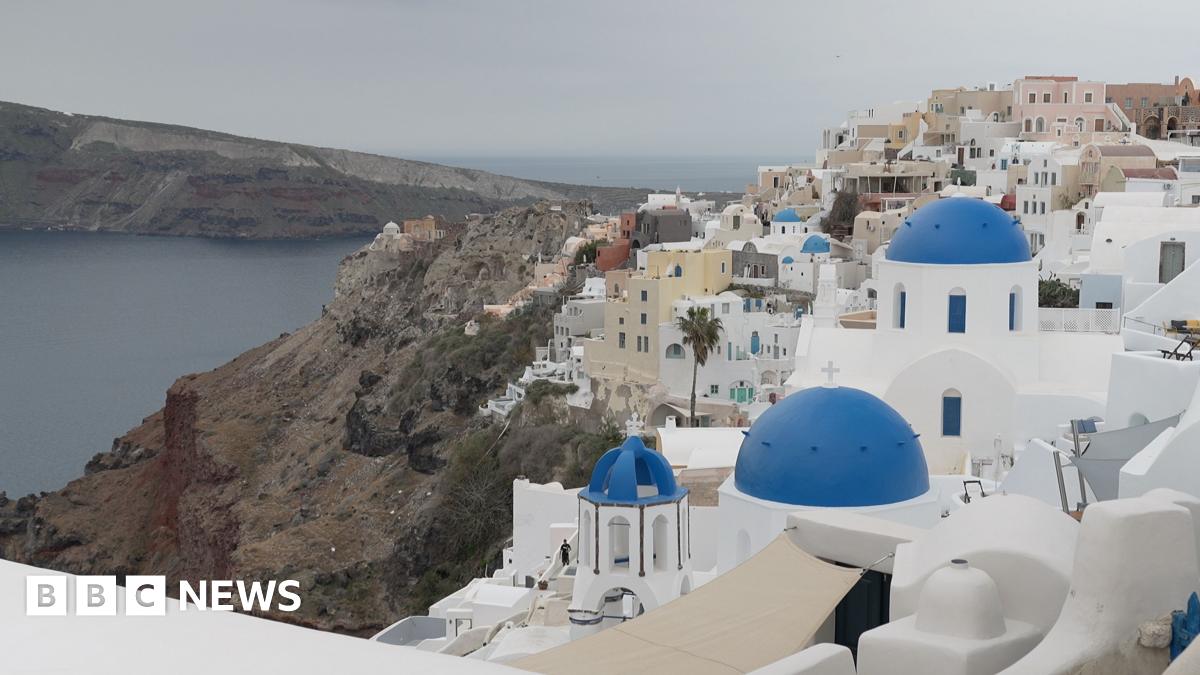Santorini's Volcanic Past: Probing For Indicators Of Future Eruptions

Welcome to your ultimate source for breaking news, trending updates, and in-depth stories from around the world. Whether it's politics, technology, entertainment, sports, or lifestyle, we bring you real-time updates that keep you informed and ahead of the curve.
Our team works tirelessly to ensure you never miss a moment. From the latest developments in global events to the most talked-about topics on social media, our news platform is designed to deliver accurate and timely information, all in one place.
Stay in the know and join thousands of readers who trust us for reliable, up-to-date content. Explore our expertly curated articles and dive deeper into the stories that matter to you. Visit Best Website now and be part of the conversation. Don't miss out on the headlines that shape our world!
Table of Contents
Santorini's Volcanic Past: Probing for Indicators of Future Eruptions
Santorini, the iconic Greek island famed for its breathtaking sunsets and white-washed villages clinging to volcanic cliffs, holds a volatile secret: its very existence is a testament to powerful volcanic eruptions. While the stunning caldera views attract millions of tourists annually, scientists are diligently working to understand the island's volcanic past to better predict its future. The question on everyone's mind: could another cataclysmic eruption be on the horizon?
The island's dramatic landscape is a direct result of the Minoan eruption, one of the largest volcanic events in recorded history, which occurred around 1600 BC. This eruption, estimated to be several times larger than Mount Vesuvius' destruction of Pompeii, left an indelible mark on the Aegean Sea, shaping the very geography of the region and potentially contributing to the decline of the Minoan civilization. The remnants of this colossal event are visible today in the caldera, a vast, submerged crater that forms the heart of Santorini.
Unraveling Santorini's Volcanic Secrets
Scientists employ a variety of advanced techniques to investigate Santorini's volcanic history and assess the risk of future eruptions. These methods include:
- Seismic monitoring: Highly sensitive instruments detect even the slightest tremors beneath the island's surface, providing crucial data on magma movement. Any significant increase in seismic activity could signal an impending eruption.
- Gas monitoring: Analysis of volcanic gases emitted from fumaroles (vents releasing steam and gases) provides insights into the pressure and composition of the magma chamber below. Changes in gas composition can be an early warning sign.
- Geochemical analysis: Studying the chemical makeup of volcanic rocks and minerals helps researchers understand the eruption history and the potential for future activity. This analysis can reveal patterns and predict the style of any future eruption.
- GPS and InSAR measurements: These techniques measure ground deformation, detecting even subtle changes in the shape of the island caused by magma movement beneath the surface. Inflation or deflation of the ground can indicate changes in the magma chamber's pressure.
These sophisticated methods allow volcanologists to build a detailed picture of the volcanic system beneath Santorini. The data collected provides critical information to assess the likelihood and potential scale of future eruptions.
The Ongoing Risk and Future Research
While Santorini is currently relatively quiet, the risk of future volcanic activity remains. The island sits atop an active volcanic arc, and historical records, coupled with geological evidence, clearly demonstrate its capacity for powerful eruptions. The ongoing research is vital not only for the safety of the inhabitants of Santorini but also for the wider region.
The future of research in Santorini focuses on improving the accuracy of eruption forecasting. Scientists are striving to refine their monitoring techniques and develop more sophisticated models to better interpret the data collected. This includes exploring the potential use of artificial intelligence and machine learning to analyze vast datasets and identify subtle precursors to volcanic unrest.
Understanding Santorini's volcanic past is crucial for predicting its future. While a large-scale eruption like the Minoan eruption is considered unlikely in the near future, the potential for smaller, yet still hazardous, eruptions remains a significant concern. Continuous monitoring and research are essential to mitigating the risks and ensuring the safety of this breathtaking island and its inhabitants. Learn more about volcanic monitoring techniques by visiting the . Staying informed about volcanic activity is key to preparedness.

Thank you for visiting our website, your trusted source for the latest updates and in-depth coverage on Santorini's Volcanic Past: Probing For Indicators Of Future Eruptions. We're committed to keeping you informed with timely and accurate information to meet your curiosity and needs.
If you have any questions, suggestions, or feedback, we'd love to hear from you. Your insights are valuable to us and help us improve to serve you better. Feel free to reach out through our contact page.
Don't forget to bookmark our website and check back regularly for the latest headlines and trending topics. See you next time, and thank you for being part of our growing community!
Featured Posts
-
 Trump Tariffs China Criticizes Trade Deals Designed To Placate The Us
Apr 22, 2025
Trump Tariffs China Criticizes Trade Deals Designed To Placate The Us
Apr 22, 2025 -
 Stun Guns The Demand From Prison Staff Facing High Risk Environments
Apr 22, 2025
Stun Guns The Demand From Prison Staff Facing High Risk Environments
Apr 22, 2025 -
 Navigating Mortgages A First Timers Guide To Homeownership
Apr 22, 2025
Navigating Mortgages A First Timers Guide To Homeownership
Apr 22, 2025 -
 Addressing The Issue Why Men Visit Their Gps Less Often Than Women
Apr 22, 2025
Addressing The Issue Why Men Visit Their Gps Less Often Than Women
Apr 22, 2025 -
 Cryptocurrency Loss On Revolut A Users Cautionary Tale
Apr 22, 2025
Cryptocurrency Loss On Revolut A Users Cautionary Tale
Apr 22, 2025
